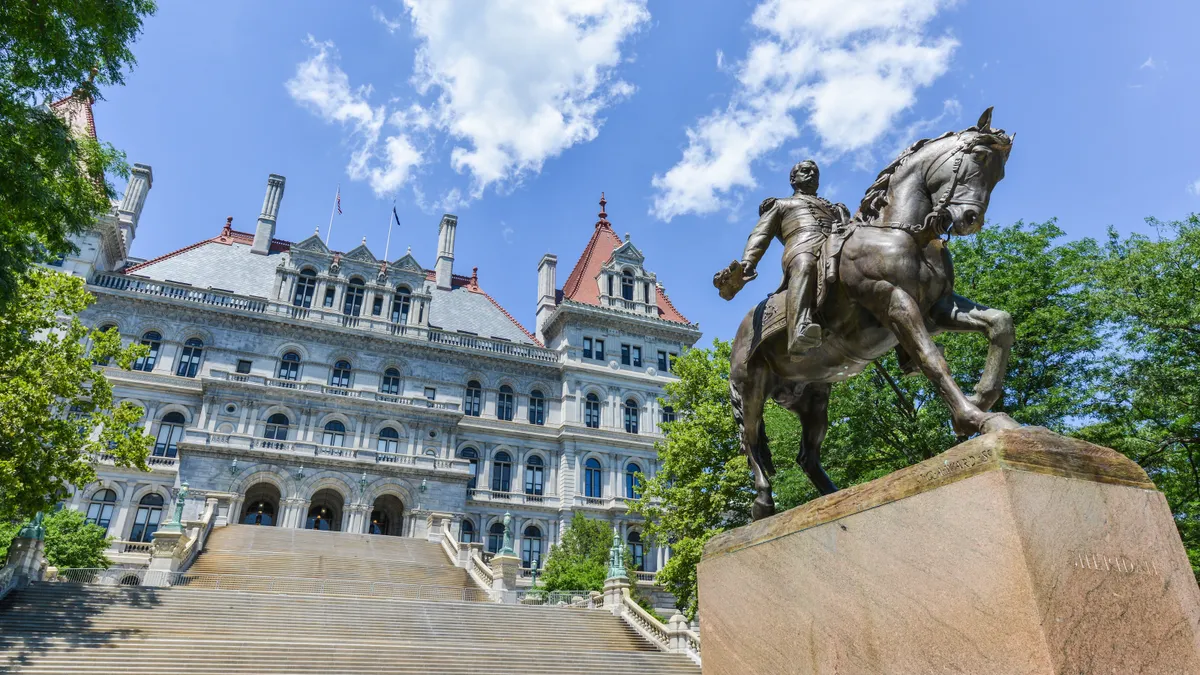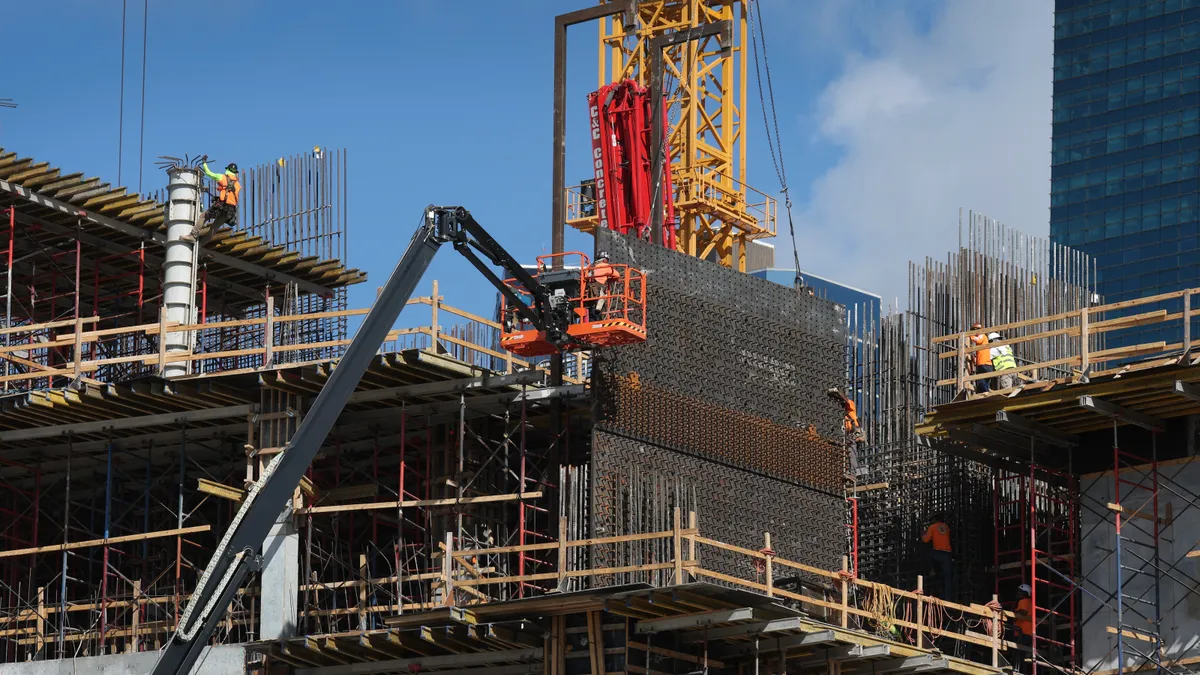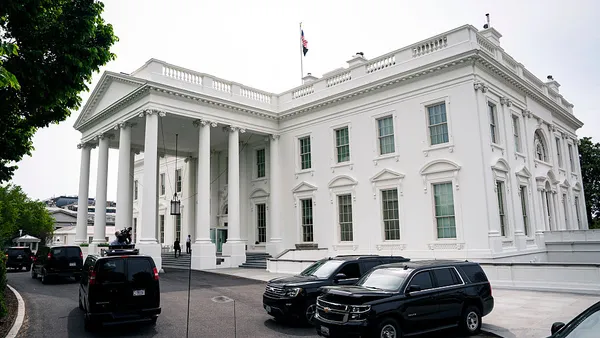Lawmakers in Albany, New York, are weighing a change that could significantly expand the number of private construction projects required to pay prevailing wages.
The proposal, which labor groups are hoping to include in the state budget due April 1, would lower the threshold for triggering prevailing wage requirements on private projects over $5 million.
Currently, only projects that receive at least 30% in public funding are subject to the requirement; the new threshold would be lowered to 20%. Prevailing wages are prescribed minimum hourly rates for public projects in a given region, determined by the average pay in that area.
The legislation would also dissolve the Public Subsidy Board, a panel created to evaluate which projects meet the standard.
The proposed change would mostly affect market-rate commercial real estate projects, said Gary LaBarbera, president of the Building and Construction Trades Council and a board member.
“It’s commercial real estate projects, pretty much everything but housing projects,” said LaBarbera. “Retail projects, community space projects, things like that, it’s market-rate [projects] in all of those areas.”
Decision deadlocks
The current law in New York mandates that qualifying private projects must pay workers wages set by local labor departments. The Public Subsidy Board must then give the final approval.
However, the board often deadlocks and makes no decisions, said LaBarbera. Over four years, the board has only deemed six of 36 projects eligible for prevailing wage, he said.
The board often spends months debating fundamental terms like what exactly constitutes a “construction cost,” according to LaBarbera. He said this allows developers to inflate the total cost of a build, making it less likely their projects hit the current 30% public subsidy threshold that triggers prevailing wage.
“There are developers that are bad actors, just like in any other industry,” said LaBarbera. “That’s what bothers me. It’s that they’re getting subsidy from the state, they’re getting market rate, but they want to pay very low wages.”
Checking wage mandates
But developer groups argue the board acts as a check on broad wage mandates.
Although some board decisions have been slow, the executive sessions, where sensitive project details are discussed, have been productive, said Joe Hogan, vice president at the Associated General Contractors of New York State, and member of the board.
“When we look at the numbers coming out nationally, New York state lags behind getting back to prepandemic job numbers in construction,” said Hogan. “At a time where we’re seeing the impact of tariffs, and even the threat of tariffs on the producer price index, we don’t need something else to hurt economic development.”
In other words, the board prevents unnecessary cost increases on private developments that receive public funding, said Hogan. That’s a good thing for private construction firms, who are currently dealing with declining backlogs and a recent jump in abandonments and on-hold activity.
In a 2023 statement, Brian Sampson, president of Associated Builders and Contractors of New York, argued prevailing wage accelerates overall public construction costs.
"[Prevailing wage] increases construction costs for taxpayers by 20% to 25%," said Sampson in the statement. "Why does [the state] think private power producers are going to build projects in New York over other states that don't force them to eat higher wages and benefits and slow walk the approval process?"
A broken system
From his perspective, LaBarbera says the system is currently broken for construction workers. He emphasized the proposed changes would only affect market-rate projects, which produce higher returns, compared to affordable housing. He argues a small decrease in profits resulting from higher wages should not drive developers away from the area.
“They want to make 30% profit, 20% profit,” said LaBarbera. “What’s wrong with 15% and pay your worker a fair wage and benefit package?”
Under the proposed legislation, the Department of Labor, not the board, would have final say over which projects must comply with prevailing wage. Labor groups are pushing to include the changes in the fiscal year 2025 state budget.
“April 1 is the deadline, but sometimes it goes a few days or weeks later than that. We’re in what we would call crunch time now,” said LaBarbera. “We’re trying to amend this law to make it serve the purpose that it was intended to serve.”













